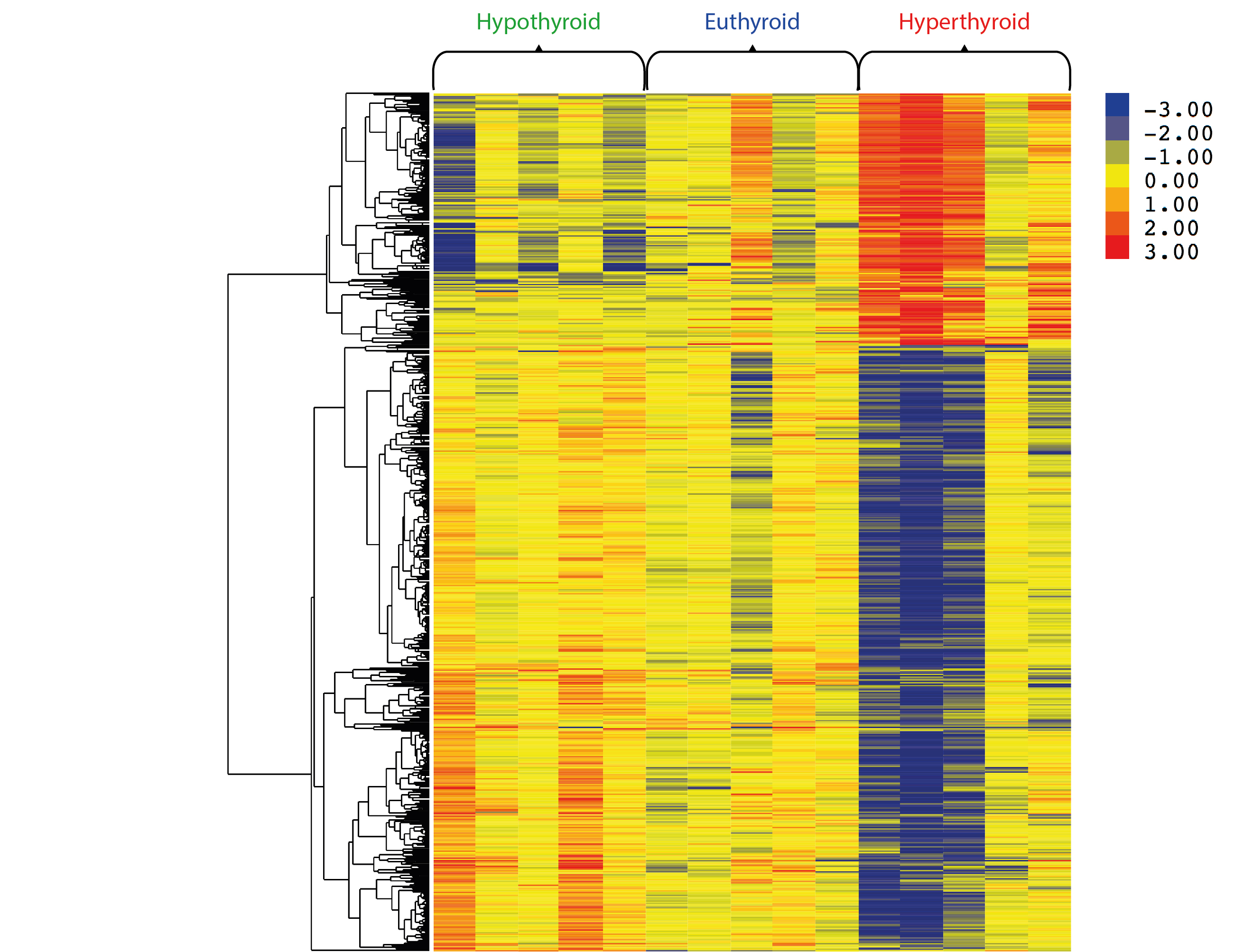Hungarian innovation in thyroid endocrinology
The Molecular Cell Metabolism Research Group led by Dr. Balázs Gereben and the Integrative Neuroendocrinology Research Group led by Dr. Csaba Fekete developed a new approach that may contribute to better healthcare for many patients with thyroid hormone (TH) related disorders. The preliminary results of the paper were presented by the first author, Richárd Sinkó, at the Annual Meeting of the European Thyroid Association (ETA) 2023, where the work was awarded the Society's Berlin-Chemie Menarini Young Investigators' Award.
The results, obtained in collaboration with the research group of Dr. Endre Nagy from the University of Debrecen and several Hungarian clinical endocrine centers have been published in the Journal of Clinical Endocrinology and Metabolism.
TH-related diseases affect tens of millions worldwide. So far, blood parameters are used to determine a patient's TH status, which is a key factor in diagnosis, treatment, and monitoring of the patient's condition. Over the past half-century, this approach has proved very useful in clinical practice. However, TH exerts its biological effects in tissues, which can autonomously fine-tune their own TH signaling through a tissue-specific, molecular regulatory system present in each of their cells. The circulating TH is utilized uniquely by each tissue.
In recent years, there has been a growing body of evidence that, although in the vast majority of cases, TH status as determined by blood parameters is an excellent diagnostic tool, there are some cases where circulating TSH and TH levels are less representative of tissue TH action. Consequently, this may lead to inaccurate diagnosis and inadequate treatment. The recently published approach is designed to address this issue by enabling the direct assessment of tissue TH economy in humans. Surprisingly, for this purpose, the researchers chose hair follicles as human tissue that can easily be sampled by plucking out a few hairs.
The hair follicle expresses genes that are TH-sensitive and can therefore serve as markers to detect changes in tissue TH action, allowing the comparison between TH status determined from blood parameters and tissue TH status. In other words, we can learn how circulating TH is used by the tissues, and understand thus better the background of patients' symptoms.
First, the researchers identified the TH-regulated genes of the human hair follicles, from which they selected so-called "marker genes". Based on the expression levels of these marker genes they developed an evaluation method used to assess tissue TH action of patients.

The thyroid hormone-responsive genes of the human hair follicles.
Using this approach, the research groups have explained why a particular group of patients does not show clinical symptoms consistent with TH status indicated by circulating parameters. Amiodarone is a commonly used anti-arrhythmic cardiac drug. In some of the amiodarone-treated patients, routinely used blood parameters show signs of severe hyperthyroidism, which is specifically reflected in dramatic changes in circulating hormone levels. Interestingly, however, in many cases, these changes do not lead to clinical symptoms of hyperthyroidism. This controversial condition causes great difficulty in the assessment of the patient's condition and the choice of therapy, as hyperthyroidism has a serious impact on cardiac function, and therefore poses a risk in deciding the feasibility of many cardiological interventions, such as heart surgery, and may even force the attending physician to discontinue amiodarone therapy.
The new results of the research groups have shown that roughly 75 % of patients taking amiodarone and having elevated circulating TH do not consequently develop tissue hyperthyroidism as increased TH levels are not reflected in actual tissue TH action. In short, amiodarone treatment seems to protect patients' tissues from the adverse effects of elevated TH levels, and therefore concerned patients are in a less severe state. This observation calls not only for measuring tissue TH action to assess TH economy accurately but also raises the need to reassess the risk of necessary interventions in this patient population. The researchers have also validated their results using their previously established and internationally patent-protected THAI mouse model in tissue types unavailable from humans for routine diagnostic purposes.
The project, funded by the National Translational Neuroscience Laboratory and NRDIO, involved the active participation of several clinical centers in Hungary: the Division of Endocrinology and the Department of Cardiology and Cardiac Surgery of the University of Debrecen, the Department of Internal Medicine and Oncology of Semmelweis University, the North-Pest Central Hospital and the Saint Lazarus Hospital in Salgótarján. The results of the successful translational collaboration can also generate interest in clinical utilization. The researchers are currently working on the further development of the approach and plan to involve other controversial patient groups.
Miklós BUCSÁNSZKI





